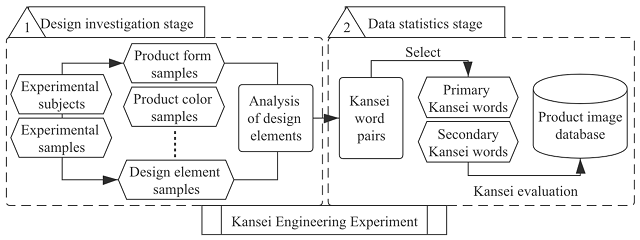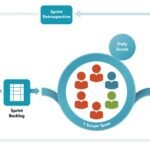In today’s competitive market, companies are constantly seeking innovative ways to create products and services that resonate with their target audience and achieve greater customer satisfaction. Kansei Engineering, a user-centered design methodology, has emerged as a powerful tool to achieve these objectives.
Currently, consumers increasingly base their purchasing decisions on subjective aspects or the impression a product leaves on them, in terms of functionality, usability, safety, and price, as well as the emotions and feelings it evokes (López et al., 2021). In this regard, combined with many disciplines, Kansei Engineering can be a powerful tool to understand customers’ emotions and feelings. This approach applies to all fields of daily life to meet customer needs and improve their satisfaction (Lin et al., 2021).
Thus, originating in Japan, Kansei Engineering aims to improve customer satisfaction by translating customers’ emotions and feelings into product design parameters, ensuring that products are not only functional but also emotionally appealing. This article delves into the complexities of Kansei Engineering, exploring its principles, methodologies, and real-world applications. We also describe the use of this methodology with other approaches and tools to enhance its performance.
What is Kansei Engineering?
Kansei Engineering, also known as “affective engineering” or “emotional design,” focuses on capturing customers’ emotional responses to products and using this data to inform design decisions. This method was developed by Professor Mitsuo Nagamachi in the 1970s and has since evolved into a crucial tool in the field of user-centered design.
Hakim et al. (2024) detail that Kansei Engineering is a fundamental method for designing products that fulfill functionality, usability, and pleasure, essential elements for business success. Kansei Engineering not only helps designers understand users’ perceptual needs but also optimizes the product design process and reduces design costs (Xue et al., 2020) by minimizing errors.
Understanding Affective Engineering: The Psychology Behind Product Design
Kansei Engineering is based on the understanding that customers’ purchases are often driven by emotions, not solely by logic or practicality. This methodology recognizes that products evoke feelings and perceptions in users and aims to leverage these emotional responses to create products that are truly desired and satisfying.
Principles of Kansei Engineering
Kansei Engineering is guided by several key principles that differentiate it from traditional design approaches:
- Translating Emotions into Design: Kansei Engineering bridges the gap between customers’ subjective experiences and objective design elements. By identifying and understanding the emotions that customers associate with products, designers can translate these feelings into tangible design features.
- Customer-Centered Approach: At the heart of Kansei Engineering is a deep focus on the customer. This methodology prioritizes customers’ emotions and feelings throughout the design process, ensuring that products align with the target audience’s needs and desires.
- Data-Driven Design: Kansei Engineering relies on data to inform design decisions. Various data collection methods, such as surveys, interviews, and focus groups, are employed to gather information on customers’ perceptions and preferences. This data-driven approach ensures that design decisions are based on real-world customer feedback.
Applications of Kansei Engineering
Kansei Engineering has proven to be a versatile methodology with a wide range of applications across various industries. Its ability to capture and translate customers’ emotions makes it a valuable tool for improving product design, service development, and marketing strategies.
- Product Design: Kansei Engineering is widely used in product design across various industries, including automotive, electronics, and consumer goods. By understanding the emotional responses that products evoke, designers can create products that resonate with consumers and achieve greater market success.
- Service Design: Kansei Engineering principles can be applied to service design to enhance customer experiences and improve service quality. By understanding the emotions associated with service interactions, companies can design services that are more customer-centric, satisfying, and memorable.
- Marketing and Advertising: Insights from Kansei Engineering can inform marketing and advertising campaigns to create messages with greater emotional resonance. By understanding the emotional drivers of consumer behavior, marketers can design campaigns that connect with consumers on an emotional level and drive engagement.
Key Benefits of Kansei Engineering
Applying the Kansei approach in a company’s product or service development processes can provide the following benefits for businesses:
- Improved Customer Satisfaction: By understanding and addressing customers’ emotions, Kansei Engineering helps create products and services that meet the target audience’s emotional needs, leading to higher customer satisfaction and loyalty.
- Enhanced Product Differentiation: Kansei Engineering can help companies differentiate their products and services from competitors by creating unique emotional experiences that resonate with consumers.
- Reduced Design Risks: By incorporating customer emotions into the early stages of the design process, Kansei Engineering can help identify potential design flaws or misalignments, reducing the risk of costly product failures.
- Greater Market Success: Kansei Engineering can contribute to greater market success by creating products and services that are more appealing to consumers and aligned with their emotional preferences.
- Cost Reduction: Kansei can help companies reduce production costs by significantly decreasing errors in product and service development through customer emotion collection, representing substantial savings in terms of resources and time.
Kansei Engineering Methodology
The Kansei Engineering methodology involves a structured process of identifying, collecting, analyzing, and applying Kansei data to product or service design.
- Define the Target Product or Service: Clearly identify the product or service for which Kansei Engineering will be applied. This step includes identifying the intended user group and market niche. This helps focus research and data collection efforts.
- Identify Kansei Words: Gather a list of Kansei words, which are terms that describe the emotions and feelings associated with the product or service. These “Kansei words” help map the product’s emotional landscape and will serve as the basis for data collection.
- Collect Kansei Data: Employ various data collection methods, such as surveys, interviews, and focus groups, to gather Kansei data from target users. This data should capture the range of emotions and feelings associated with the product or service.
- Analyze Kansei Data: Analyze the collected Kansei data to identify patterns and relationships between Kansei words and product or service attributes. This analysis will reveal insights into the emotional drivers of customer perception.
- Develop Kansei Mapping: Create a Kansei mapping model that links Kansei words with product or service design parameters. This model will serve as a guide to translating customers’ emotions into design decisions.
- Implement Kansei Engineering Findings: Integrate Kansei Engineering insights into the product or service design process. This may involve modifying design elements, material choices, or user interactions to align with customers’ emotions.

On the other hand, Liu et al. (2023) proposed a method for selecting Kansei word pairs based on term frequency: evaluation, potency, activity (TF-EPA). This method was used to obtain the Kansei word pairs that represent the emotional images of the product, improving the Kansei engineering method to adapt it to the emotional design trends of the big data era.
Examples of Kansei Engineering in Action
Kansei engineering has been successfully applied across a wide range of industries, leading to the development of products and services that are more emotionally resonant and satisfying for customers. Here are some examples:
Case Study 1: Automotive Design
An automobile manufacturer used Kansei engineering to design a vehicle that evoked feelings of excitement and luxury among target consumers. By understanding the emotional responses consumers associated with luxury cars, the manufacturer was able to create a vehicle that not only met functional needs but also appealed to the emotional desires of its target audience.
In this regard, Mazda’s application of Kansei engineering has led to the development of vehicles embodying the “Zoom-Zoom” spirit, emphasizing the joy of driving and emotional connection with the car. Additionally, Lai et al. (2022) used big data from the internet to gather user Kansei requirements for the exterior design of new energy vehicles (NEV), such as electric cars.
Similarly, Lai et al. (2024) jointly analyzed online user comments and offline big data, developing a novel framework to efficiently merge these two data sets for Kansei engineering of connected intelligent vehicle (CIV) features.
Case Study 2: Consumer Electronics Design
According to López et al. (2021), the Kansei methodology has significant and direct applications in the development of technological electronic devices.
In this context, an electronics company employed Kansei engineering to develop a smartphone that conveyed a sense of innovation and ease of use. Through Kansei engineering research, the company identified that consumers associated innovation with sleek design and advanced features, while ease of use was linked to intuitive controls and a simplified interface. By incorporating these emotional insights into the smartphone design, the company created a product that resonated with consumers and achieved market success.
Case Study 3: Service Design
A hotel company applied Kansei engineering principles to enhance the customer experience in their hotel, creating a warm and welcoming atmosphere. The company identified that guests associated a cozy environment with friendly staff, comfortable accommodations, and a homely feel. By incorporating these emotional cues into the hotel’s service offerings, the company created a more memorable and satisfying experience for its guests.
Similarly, Habyba et al. (2023) used the Kansei engineering approach for designing university classrooms, resulting in two design concepts: “a good classroom with fresh and clean lines” and “a bright classroom.”
Challenges and Considerations for Implementing Kansei
The Kansei methodology offers numerous benefits for companies; however, there are several challenges and considerations to keep in mind when employing it:
- Complexity of Implementation: Kansei engineering involves complex processes that require a deep understanding of both emotional psychology and technical design. This complexity can be a barrier for some organizations.
- Data Collection and Analysis: Collecting and analyzing the vast amount of data required for Kansei studies can be resource-intensive. Statistical tools and software are often needed to handle this data effectively.
- Cultural Differences: Emotional responses can vary significantly across different cultures, making it essential to tailor Kansei studies to specific target markets to ensure relevance and effectiveness.
Integrating Kansei with Other Tools
Schütte et al. (2023) highlighted that since the beginning of the current millennium, new methods and applications, including virtual reality and artificial intelligence, have emerged as the Kansei concept has spread across Europe and the rest of the world. In this context, Kansei is increasingly used in conjunction with other methodologies and tools to enhance its performance.
- TRIZ: Hartono (2020) proposed a modified application of Kansei engineering for sustainable service design, incorporating TRIZ and human factors and ergonomic concerns, and conducted an empirical study in the services of an airport lounge and lobby to confirm the applicability of the proposed model.
- QFD: Ginting et al. (2020) investigated the integration of Kaizen with Quality Function Deployment (QFD), concluding that Kansei engineering can help translate customer feelings into design specifications, while QFD can help companies determine customer desires.
- Virtual Reality: Liu and Yang (2022) developed a Kansei engineering-based method through virtual reality (VR) to build a mapping relationship between form elements and consumer affect from four dimensions: general, unity, interrelation, and detail. This was done to provide references for product form design, concluding that the VR-based prediction model is more accurate and reliable in predicting users’ emotional preferences.
- Kano Model: Cai et al. (2022) proposed a design framework based on Kansei engineering (KE) and Kano models to design services oriented to customer perception.
- Text Mining: Hartono et al. (2023) proposed a more structured Kansei engineering methodology that incorporates the Kansei text mining process for robust service design.
Conclusion
Kansei engineering offers a valuable approach to product and service design by incorporating customer emotions and feelings into the development process. This methodology leads to products and services with greater emotional resonance, satisfaction, and market success.
Currently, due to the complexity of implementing Kansei, researchers are employing the approach with other methodologies and tools to enhance performance and create products that meet customer expectations.
In conclusion, Kansei engineering has become a powerful tool for companies seeking to create products and services that are not only functional but also emotionally appealing. By bridging the gap between customer emotions and product design, Kansei engineering helps companies achieve greater customer satisfaction, product differentiation, and market success.
Reference
Cai, M., Wu, M., Luo, X., Wang, Q., Zhang, Z., & Ji, Z. (2022). Integrated Framework of Kansei Engineering and Kano Model Applied to Service Design. International Journal of Human–Computer Interaction, 39(5), 1096–1110. https://doi.org/10.1080/10447318.2022.2102301
Ginting, R., Ishak, A., Malik, A. F., & Satrio, M. R. (2020, December). Integration of kansei engineering and quality function deployment (qfd) for product development: a literature review. In IOP Conference Series: Materials Science and Engineering (Vol. 1003, No. 1, p. 012020). IOP Publishing.
Habyba, A. N., Dewayana, T. S., Rahmawati, N., & Rhamanda, D. (2023, December). An affective university classroom design formula based on kansei engineering approach. In AIP Conference Proceedings (Vol. 2680, No. 1). AIP Publishing.
Hakim, A., Suhardi, B., Laksono, P. W., & Ushada, M. (2024). Systematic Review of Kansei Engineering Method Developments in the Design Field. Jurnal Optimasi Sistem Industri, 23(1), 92-108.
Hartono, M. (2020). The modified Kansei Engineering-based application for sustainable service design. International Journal of Industrial Ergonomics, 79, 102985. https://doi.org/10.1016/j.ergon.2020.102985
Hartono, M., Prayogo, D. N., Ronyastra, I. M., & Baredwan, A. (2023). Kansei engineering with online review mining methodology for robust service design. Theoretical Issues in Ergonomics Science, 25(4), 495–520. https://doi.org/10.1080/1463922X.2023.2261995
Lai, X., Zhang, S., Mao, N., Liu, J., & Chen, Q. (2022). Kansei engineering for new energy vehicle exterior design: An internet big data mining approach. Computers & Industrial Engineering, 165, 107913. https://doi.org/10.1016/j.cie.2021.107913
Lai, X., Lin, S., Zou, J., Li, M., Huang, J., Liu, Z., Li, D., & Fu, H. (2024). Kansei engineering for the intelligent connected vehicle functions: An online and offline data mining approach. Advanced Engineering Informatics, 61, 102467. https://doi.org/10.1016/j.aei.2024.102467
Lin, S., Shen, T., & Guo, W. (2021). Evolution and emerging trends of kansei engineering: A visual analysis based on citespace. Ieee Access, 9, 111181-111202.
Liu, X., & Yang, S. (2022). Study on product form design via Kansei engineering and virtual reality. Journal of Engineering Design, 33(6), 412–440. https://doi.org/10.1080/09544828.2022.2078660
Liu, Z., Wu, J., Chen, Q., & Hu, T. (2023). An improved Kansei engineering method based on the mining of online product reviews. Alexandria Engineering Journal, 65, 797-808. https://doi.org/10.1016/j.aej.2022.09.044
López, Ó., Murillo, C., & González, A. (2021). Systematic Literature Reviews in Kansei Engineering for Product Design—A Comparative Study from 1995 to 2020. Sensors, 21(19), 6532. https://doi.org/10.3390/s21196532
Schütte, S., Lokman, A. M., Marco-Almagro, L., Ishihara, S., Yanagisawa, H., Yamanaka, T., … & Coleman, S. (2023). Kansei for the Digital Era. International Journal of Affective Engineering, 23(1), 1-18.
Xue, L., Yi, X., & Zhang, Y. (2020). Research on Optimized Product Image Design Integrated Decision System Based on Kansei Engineering. Applied Sciences, 10(4), 1198. https://doi.org/10.3390/app10041198
Editor and founder of “Innovar o Morir” (‘Innovate or Die’). Milthon holds a Master’s degree in Science and Innovation Management from the Polytechnic University of Valencia, with postgraduate diplomas in Business Innovation (UPV) and Market-Oriented Innovation Management (UPCH-Universitat Leipzig). He has practical experience in innovation management, having led the Fisheries Innovation Unit of the National Program for Innovation in Fisheries and Aquaculture (PNIPA) and worked as a consultant on open innovation diagnostics and technology watch. He firmly believes in the power of innovation and creativity as drivers of change and development.





